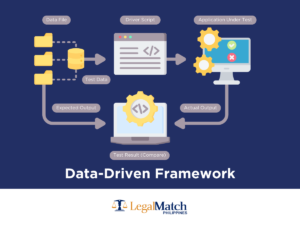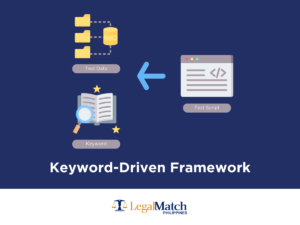Discover different types of frameworks and how they can boost efficiency, accuracy, and speed in your software testing process.
Software development is speeding up, and quality can’t be sacrificed. To keep up, companies are turning to test automation. In fact, 63% of QA teams in 2024 choose automation over manual testing for faster and inexpensive results.
Test automation has become essential to ensure software works as expected, and test automation frameworks are key to making it happen.
What Is an Automated Testing Framework?
Before we explore the different types and benefits of automated testing frameworks, let’s first define what an automated testing framework is.
A test automation framework is a structured set of guidelines, tools, and practices that streamline the creation, execution, and maintenance of automated test cases. It serves as a blueprint for building efficient and reusable test scripts.
Key components of a test automation framework typically include test data, scripts, object repositories, environment configurations, and reporting mechanisms. By establishing a standardized approach, frameworks enhance test efficiency, improve test coverage, and facilitate collaboration among team members.
Types of Automation Testing Frameworks
There are several types of test automation frameworks, each with its own strengths and weaknesses. Understanding these different approaches will help you select the most suitable framework for your project.
Linear Automation Framework

This is the simplest framework where test cases are executed sequentially. While easy to implement, it lacks reusability and maintainability, making it suitable for small-scale projects with limited test cases.
Modular Based Testing Framework

In this approach, test cases are divided into smaller, independent modules. This promotes reusability and maintainability, as changes to one module typically don’t affect others.
Library Architecture Testing Framework

Similar to modular, this framework focuses on creating reusable functions or modules. However, it emphasizes grouping related functions together based on their purpose, rather than breaking down the application under test into modules.
Data-Driven Framework

Here, test data is separated from the test logic. This allows for efficient test case creation and modification by simply changing the data. It’s ideal for applications with extensive data-driven testing requirements.
Keyword-Driven Framework

This framework uses keywords to represent test actions. It’s user-friendly and allows for collaboration between technical and non-technical team members.
Benefits of Test Automation Frameworks
Test automation frameworks offer several advantages for software development teams:
Increased Efficiency: Automated tests execute much faster than manual tests, saving significant time and resources.
Improved Accuracy: By eliminating human error, test automation ensures higher precision and reliability in test results.
Enhanced Test Coverage: Frameworks allow for the execution of a larger number of test cases, leading to more comprehensive testing.
Faster Time-to-Market: Accelerated testing cycles contribute to quicker software releases.
Better Maintainability: Well-structured frameworks promote code reusability and simplify test script updates.
Cost Reduction: While there’s an initial investment in setting up the framework, long-term cost savings are realized through reduced manual testing efforts.
Improved Test Reporting: Detailed reports generated by automation frameworks provide valuable insights into test execution and results.
Enables Continuous Integration and Continuous Delivery (CI/CD): Automation frameworks are essential for integrating testing into the CI/CD pipeline.
Adopting a well-structured test automation framework is needed to achieve rapid, reliable, and cost-effective software development. By streamlining test processes, improving accuracy, and expanding test coverage, automation frameworks significantly contribute to delivering high-quality products to market faster. As technology continues to evolve, the strategic implementation of automation frameworks will remain a cornerstone of successful software development initiatives.
